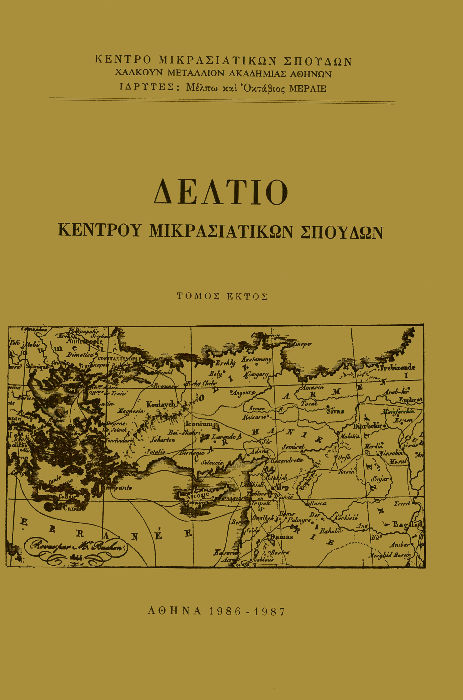The ottoman historiographer Acic paca-Zade and the importance of his chronicle as a source for late-byzantine and early-ottoman history
Abstract
A$ik-Pa$a-Zade (c. 1400 - c. 1486), the oldest and —perhaps— the
most important among the early Ottoman (Osmanli) chroniclers, composed
the «Tevarih-i Al-i Osman» (Chronicle of the House (=Dynasty)
of Osman), a lengthy (166 chapters) account of early Turkish history
from the early 13th century until the late 1450s, following the capture
of Constantinople (Istanbul) by the sultan Mohammed (Mehmet) II
«Fatih> (the «Conqueror») on 29 May, 1453.
The importance of this authentic work is immense, since it includes —
among others— a comparatively trustworthy (though sometimes impregnated
by fable and legend) account of the arrival of the early Osmanlis
in Anatolia, following their repulsion from inner Asia by the Mongols.
It also contains valuable pieces of information on the gradual expansion
of the Ottoman Sultanate in Asia Minor and the Balkan peninsula in the
course of the 14th and 15th centuries, as well as important details on
the policy pursued by the Conqueror concerning his Christian subjects.
Several manuscripts of the chronicle’s old Ottoman script (in Arabic
characters) survive in museums and libraries in Turkey (Top Kapi),
and its first ed. by Ali Bey (Istanbul 1914) was followed by two more
in the reformed latinized Turkish alphabet by F. Giese (Leipzig 1929)
and Ç. N. Atsiz (Istanbul 1949), while a German translation (with
commentaries) of the chronicle by R. F. Kreutel appeared in 1959
(Graz-Vienna).
Article Details
- How to Cite
-
Σαββίδης Α. Γ. (1982). The ottoman historiographer Acic paca-Zade and the importance of his chronicle as a source for late-byzantine and early-ottoman history. Bulletin of the Centre for Asia Minor Studies, 3, 57–70. https://doi.org/10.12681/deltiokms.279
- Issue
- Vol. 3 (1982)
- Section
- Articles

This work is licensed under a Creative Commons Attribution-NonCommercial-ShareAlike 4.0 International License.
Authors who publish with this journal agree to the following terms:
- Authors retain copyright and grant the journal right of first publication with the work simultaneously licensed under a Creative Commons Attribution Non-Commercial License that allows others to share the work with an acknowledgement of the work's authorship and initial publication in this journal.
- Authors are able to enter into separate, additional contractual arrangements for the non-exclusive distribution of the journal's published version of the work (e.g. post it to an institutional repository or publish it in a book), with an acknowledgement of its initial publication in this journal.
- Authors are permitted and encouraged to post their work online (preferably in institutional repositories or on their website) prior to and during the submission process, as it can lead to productive exchanges, as well as earlier and greater citation of published work (See The Effect of Open Access).




